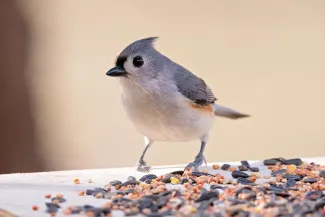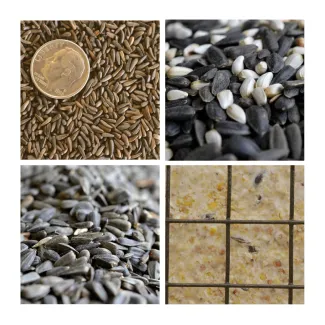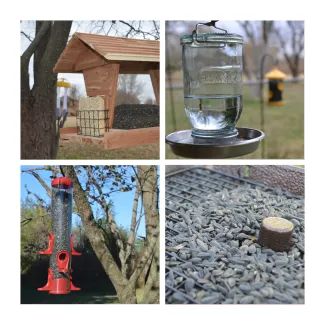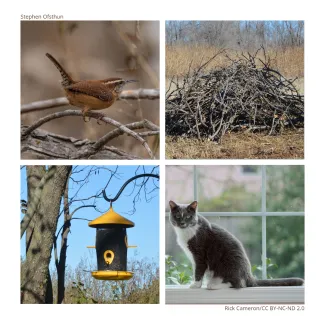Most hobbies come with optional – sometimes expensive – gear and wildlife watching is no exception. Binoculars make it easier to see wildlife from a distance, cameras help you capture the moment, and field guides help you identify what you see or photograph. But the thing Oklahoma wildlife watchers collectively spend the most money on? Bird food.
Adding a bird feeder is one of the easiest ways to attract birds to your yard. Feeding stations can be simple or elaborate, depending on your style and budget. They can also be designed to attract a wide range of bird species, or to entice your favorite species in the area. We share the following four tips for getting the most out of your feeder.

Tufted titmouse.
Offer a Varied Menu
To attract the greatest variety of bird species, a feeding program should offer a variety of food.
- Sunflower, safflower and other types of seeds can attract sparrows, finches, dove and cardinals;
- Suet can attract woodpeckers, wrens and nuthatches;
- Fruits can attract mockingbirds and robins;
- Sugar water can attract hummingbirds and orioles in spring and summer.
While a variety of food types can attract a broader range of species, many Oklahoma birds are content with simple black-oil sunflower seeds. Look for commercial mixes with a high percentage of sunflower seeds, or consider feeding straight sunflower seeds if you're new to bird feeding or looking for a low maintenance option.

Stage Feeders at Multiple Levels
Presenting food items at different locations and levels in the yard may also attract a variety of bird visitors.
- Ground-feeding birds, like juncos and most sparrows, may prefer a platform feeder on or near the ground.
- Birds that typically feed in the canopy, like chickadees and titmice, will readily come to the rims and perches of feeders hanging several feet from the ground.
- Don't forget to incorporate drinking water into your feeding station. It can be as simple as an inverted trash can lid, or the more common bird bath.

Provide an Escape
Birds typically fly back and forth from feeder to cover so that they’re less exposed to predators.
- Placing feeders about five feet from escape cover like brush piles, shrubs or trees can make visiting birds more comfortable.
- If cats are in the neighborhood, it may be a good idea to keep feeders at a greater distance from escape cover to avoid ambushes.

Keep it Clean
Washing feeders in a one-part bleach to nine-parts water solution two to three times a year can help keep your feeding station clean. Rotating feeding stations and cleaning the area under feeders with a rake or leaf blower can also help keep your feeding station open for business.
- If you notice sick birds at your feeder, close your station for up to a week and disinfect your feeder and the ground underneath.